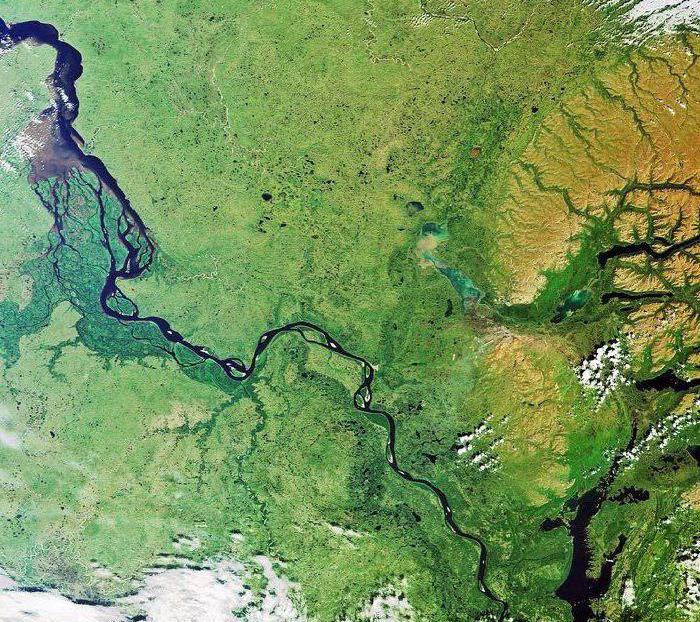Studying the Central Siberian Plateau, geologists became interested in the hill in its southwestern part. What is unusual in the area called the Yenisei Ridge? Why is so much attention riveted to this place?
Short description
Ridge occupies the right bank of the Yenisei River, located between the rivers Podkamennaya Tunguska and Kan. The length of the Yenisei Ridge does not exceed 750 km. The width of the mountain hill is 200 km. The highest point of the ridge is considered the Enashimsky Polkan hill, its height - 1104 m.
The area where the Yenisei Ridge is located is conventionally divided into two mountain systems:
- South Yenisei low-mountain range.
- Zaangarye.
The separation of mountain systems runs along the Angara River.
Geological Information
The geology of the ridge is not fully understood. Scientists have yet to establish the age of the Precambrian sediments that make up the mountain base. This ridge is one of the parts of the Yenisei-Sayan folded-cover region, which formed the southwestern edge of the Siberian platform.

The Yenisei Ridge consists of ancient dense rocks. Limestones, sandstones, conglomerates, shales, traps are highlighted here. The mountain system has stable newest Quaternary uplifts on a more ancient Proterozoic crystalline base. The geodynamic period of the formation of the Yenisei Ridge is considered a Proterozoic. This is called Baikal folding. No less than six hundred million years ago, the tectonic structure of southern Siberia underwent numerous fluctuations. She rose and fell. The mountains were destroyed, then updated and climbed again. The sedimentary strata accumulated during the period when a warm sea was located in the south of Siberia. Therefore, they contain sand, clay and limestone deposits (waste products of the inhabitants of the sea).
Granitoids of the Yenisei Ridge are considered as the main indicators of the geodynamic situation in the formation of the continental crust. This is a generalized name for rocks of magmatic origin, which contain silicon oxides and quartz. During the study and research of the ridge on the composition of granitoids, many scientific works were written and several doctoral dissertations were defended.
The complex structure of the geological layers and the metamorphization of rock deposits over time led to the formation of rare minerals, marbles, dolomites and other minerals. This makes the Yenisei Ridge a zone of increased human attention.
Relief
The Yenisei Ridge consists of various types of relief. The interfluve is flattened or dome-shaped, the river valleys are steep, with great depth. The highest point is on the rest of the ridge. The lowest is located in the north, near the Yenisei River, its height is 30 m. At the intersection of the Yenisei Ridge (below the mouth of the Kamennaya Tunguska River), the riverbed forms the Osinovsky threshold. Another threshold called Kazachinsky is located in the area of Kamenny Cape, a little more than 220 km from Krasnoyarsk.
Minerals
The main attention to this area is attracted by huge mineral deposits. It is with them that the economic activity of a person in the Yenisei Ridge is mainly connected. Deposits of iron ore, bauxite (aluminum ore), magnesites, talc, and titanite have been discovered here. In the 19th century, rich gold deposits were found in the bowels of the earth.
It is believed that the presence of gold in the depths of the ridge was scouted by Yegor Ivanovich Zhmaev. He was an employee of the merchant Zotov. Zhmaev collected information from Evenks (local Aborigines) and in 1839 applied for 5 gold mines on behalf of his employer. And since 1840, the real “gold rush” began on the Yenisei Ridge. In the 19th century, about 69% of the mining of this precious metal in Russia was accounted for by the Yenisei Ridge gold.
Currently, the development of gold deposits is successfully continued by the state. The largest field today is the Olympiadinsky (North Yenisei region). According to geological exploration, the total gold reserve of the ridge is about 1570 tons.
A bit about nature. Vegetation
The Yenisei Ridge is located in the Siberian taiga zone. Two species are observed here: southern larch taiga and Siberian pine with dense undergrowth. Pine dark coniferous taiga is the western slopes of the hills. The highest elevations are treeless, they are covered with shrubs. Alder, wild rose, wild raspberries, currants, and rhododendron are often found as an undergrowth of larch taiga. Pine taiga has reed and hellebore undergrowth.
Animals
In the mountains of the Yenisei Ridge, there is a brown bear, wolf, elk, lynx, and wolverine. There are different types of foxes, badger, ferret, ermine, weasel, sable, deer, ram and other animals. From time immemorial, fur animals have been hunted in these places.
In the crowns of trees live different birds. Their list is very long: here there is a crossbill, and a pine nut, and a blackbird, and a woodpecker. An abundance of birds of prey is associated with a large number of birds: owls, hawks, and other species. There is a huge number of capercaillie and hazel grouse. The abundance of birds is associated with a powerful forage base, since there are many insects in the taiga.